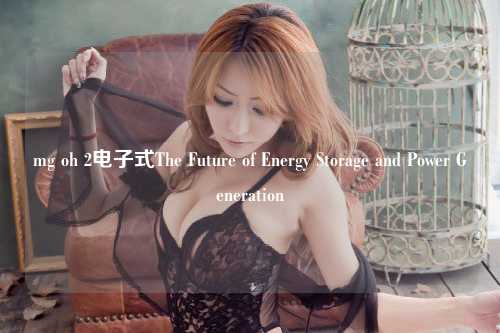mg oh 2电子式The Future of Energy Storage and Power Generation
In the ever-evolving landscape of energy storage technologies, magnesium hydroxide (MgOH₂) has emerged as a promising candidate for revolutionizing the way we store and generate electricity. This article explores the properties, applications, and future prospects of MgOH₂ in the realm of electronic devices and power generation.
Introduction to MgOH₂

Magnesium hydroxide is a naturally occurring compound that consists of magnesium ions and hydroxide ions. It is known for its high stability, chemical inertness, and ability to store significant amounts of electrical charge at low voltages. Unlike many other rechargeable batteries, MgOH₂ does not suffer from common issues such as thermal runaway or dendrite growth during charging and discharging cycles.
Properties of MgOH₂
One of the most significant advantages of MgOH₂ is its ability to store large amounts of energy per unit volume. In fact, it can potentially store up to five times more energy than lithium-ion batteries with similar dimensions. Additionally, MgOH₂ offers lower costs compared to traditional battery materials like lithium, which makes it an attractive option for widespread adoption in various applications.
The compound also boasts excellent safety characteristics, making it ideal for use in portable electronics where safety is paramount. MgOH₂'s non-flammable nature and stable discharge process make it less prone to fire hazards, ensuring a safer environment for users.
Applications in Electronic Devices
Given its unique combination of high energy density, low cost, and safety, MgOH₂ is poised to revolutionize the field of portable electronics. From smartphones to laptops, MgOH₂-based batteries could significantly extend device life and reduce overall weight and size. For example, a recent study by researchers at MIT demonstrated that MgOH₂ could be used to power wearable technology without degrading performance over time.
Moreover, MgOH₂'s flexibility and compatibility with existing manufacturing processes offer significant potential for integration into existing electronics. This opens up new possibilities for miniaturization and improved efficiency in consumer electronics.
Potential in Power Generation
Beyond personal devices, MgOH₂'s capabilities extend to grid-scale energy storage systems. Traditional methods of storing renewable energy, such as pumped hydroelectric storage, require extensive infrastructure and land. In contrast, MgOH₂-based batteries can provide a scalable solution that requires minimal space and can quickly adapt to varying energy demands.
For instance, a project in Germany aims to develop a large-scale MgOH₂-based power plant capable of storing excess solar and wind energy generated during peak hours. By integrating this system into the national grid, the facility would help stabilize power distribution and reduce reliance on fossil fuels, contributing to a more sustainable energy mix.
Challenges and Future Prospects
Despite its numerous benefits, MgOH₂ faces several challenges that need to be addressed before wide-scale implementation becomes feasible. One major hurdle is scaling up production costs while maintaining quality control. Currently, the material is produced through manual processes due to the complex nature of the electrolyte required for its formation. Improving automation and implementing efficient recycling techniques will be crucial for commercial viability.
Another challenge lies in the long-term durability and stability of MgOH₂ electrodes. While early tests have shown promise, ongoing research is necessary to identify optimal conditions for prolonged usage. Ensuring consistent performance across different environmental factors, including temperature variations and humidity levels, remains a priority for developers.
However, advancements in nanotechnology and materials science offer hope for overcoming these hurdles. Researchers are exploring ways to optimize electrode structures and improve the conductivity of electrolytes, leading to enhanced energy density and longevity.
Conclusion
Magnesium hydroxide (MgOH₂) presents a compelling alternative to current energy storage solutions, particularly in the realms of portable electronics and grid-scale power generation. Its exceptional energy density, affordability, and safety profile make it a viable candidate for transformative changes in both sectors.
As technology continues to evolve, MgOH₂ holds immense potential for improving our understanding of energy storage and enhancing the sustainability of our global energy systems. With continued investment in research and development, MgOH₂ is expected to play a pivotal role in shaping the future of energy storage and power generation, enabling a cleaner and more reliable energy landscape for generations to come.
This article provides a comprehensive overview of MgOH₂, highlighting its key properties, applications, and future prospects. By examining the challenges and opportunities surrounding this innovative material, we gain insight into how MgOH₂ may reshape the energy industry in the years ahead.
mg oh 2电子式,MgOH2电子式<< 上一篇
下一篇 >>
网友留言(0 条)